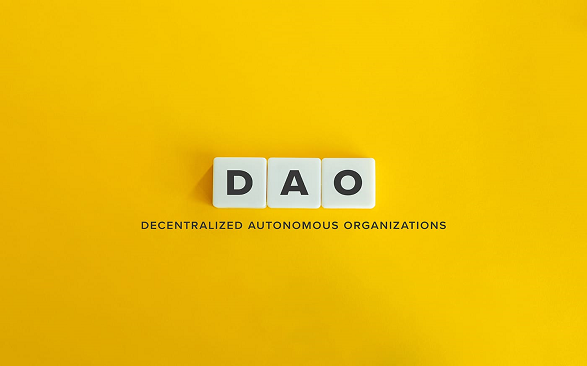Introduction
In 2008, Satoshi Nakamoto unveiled the Bitcoin whitepaper, a document that transformed the world’s understanding of digital currency and trustless transactions. While Bitcoin’s adoption has been remarkable, there is a world of potential still waiting to be uncovered.
In a tweet from the enigmatic Twitter account @Satoshi, it appears that Nakamoto himself has hinted at the uncharted territory within Bitcoin. Though believed to be an account controlled by Craig Wright, an Australian computer scientist who claims to be Satoshi Nakamoto, the tweet remains an attempt to lay the groundwork for exploring aspects not explicitly contained in the Bitcoin Whitepaper.
As tweeted by the @Satoshi account:

1. Smart Contracts – Extending the Foundation
The Bitcoin Whitepaper briefly introduced the concept of smart contracts. But Ethereum took smart contracts further, making them a central element of its platform. Now, it’s time to extrapolate and explain how smart contracts can play an essential role in shaping the future of decentralized applications, automated agreements, and beyond.
2. Privacy – Beyond Pseudonymity
Satoshi Nakamoto understood the importance of privacy in transactions, and privacy-focused cryptocurrencies like Monero and Zcash have emerged as a response. But it’s crucial to delve deeper into privacy solutions, ensuring the true anonymity of users while maintaining the integrity of the blockchain.
3. Scaling – Beyond the Whitepaper’s Scope
Scaling was not a primary focus in the whitepaper, but as Bitcoin’s popularity has surged, scalability has become a critical challenge. Innovations like the Lightning Network have begun to address these concerns. It’s time to explore how scaling solutions can be deployed on a wider scale without compromising the network’s integrity.
4. Interoperability – Bridging Blockchains
The whitepaper primarily concerned itself with the Bitcoin network, but as the blockchain ecosystem diversifies, seamless interoperability between different blockchains is paramount. We must uncover how this interconnected future can benefit industries, enabling a more decentralized and efficient exchange of assets and data.
5. Decentralized Applications (dApps) – Expanding Horizons
While the Bitcoin whitepaper did not explicitly discuss decentralized applications, platforms like Ethereum have paved the way. Now, the time has come to elucidate how DApps can achieve mainstream adoption, transforming industries far beyond finance.
6. Tokenization of Real Assets – Unveiling Possibilities
The whitepaper didn’t explore the concept of tokenizing real-world assets, but ongoing projects are working on this transformation. As we step forward, we must navigate the regulatory framework and discover the potential of asset tokenization for real estate, art, stocks, and more.
7. Governance and Consensus Mechanisms – Evolving Rules
Satoshi Nakamoto’s whitepaper presented the proof-of-work consensus mechanism. Since then, alternative mechanisms have been developed, providing us with the opportunity to explore how these new systems can ensure the long-term stability and efficiency of blockchain networks.
Read also: What is bitcoin?

The Return of Satoshi Nakamoto
The cryptoverse has been abuzz with the question of whether the Twitter account @Satoshi belongs to the real Satoshi Nakamoto. Could it be true? Is the enigma behind Bitcoin truly back? The anonymity surrounding Nakamoto has always been a defining feature of Bitcoin’s origin story, and if @Satoshi is indeed the creator, it adds an intriguing twist to the narrative. While the identity of Nakamoto remains a mystery, the mere possibility of their return has reignited the curiosity and excitement surrounding Bitcoin and the blockchain.
Beyond Finance
Satoshi Nakamoto’s vision transcended the realm of finance, introducing a trustless system for electronic transactions. We can now extend this vision to supply chain management, healthcare, voting systems, and more, creating transparent and secure processes in sectors vital to society.
Furthermore, the proof-of-work concept, as outlined by Nakamoto, can be applied to address a wide array of computational problems, potentially advancing fields such as cryptography and cybersecurity.
Note: Craig Wright “has been proven to be a fraud”—Community Notes
If the warning contained in the X Community Notes is anything to go by, Craig Wright, who claims to be Satoshi Nakamoto and controls @Satoshi account on X, “has been proven to be a fraud”. The Community Notes read:
Craig Wright claims to be Satoshi Nakamoto, but has been proven to be a fraud. He controls this account and it should not be trusted: https://x.com/agerhanssen/status/1708911279044170050 http://blockchain.news/news/d024ba14-cb8f-4143-9f3f-0012795f9879 https://www.coindesk.com/policy/2022/09/15/craig-wright-tells-court-he-stomped-on-the-hard-drive-containing-satoshi-wallet-keys/
Read also: What is Bitcoin Cash?
Conclusion
The tweet shared via the @Satoshi account—though from a controversial source—serves as a testament to the vast potential within Bitcoin that remains uncharted. While Bitcoin’s success is evident, there is a wealth of untapped possibilities waiting to transform industries and drive technological advancements.
As we journey into this unexplored territory, the future holds promises of a blockchain that revolutionizes data management, secures transactions, and redefines trust in a multitude of domains.
Can Satoshi’s original vision extend to a broader scope beyond an electronic cash system? One that reshapes our world far beyond the boundaries of the Bitcoin Whitepaper? Time will tell.
Read also: What is bitcoin halving and why does it matter to crypto investors?
Discover more from Crypto Asset Buyer
Subscribe to get the latest posts sent to your email.




